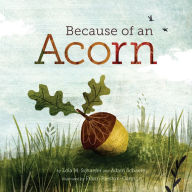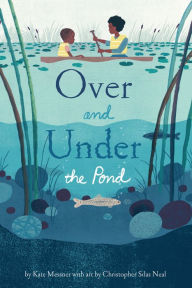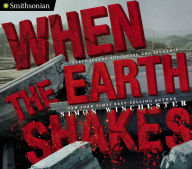BEATRICE HOLLYER has been a writer and traveler all her life. As a television reporter and newscaster, she covered conflicts in the Gulf, the Middle East, South Africa, and the former Yugoslavia, and reported from Europe and the United States. She was born in South Africa and has been living in London, England, for the past twenty years.
Our World of Water: Children and Water Around the World
Hardcover
(First Edition)
$17.99
- ISBN-13: 9780805089417
- Publisher: Henry Holt and Co. (BYR)
- Publication date: 09/01/2009
- Edition description: First Edition
- Pages: 48
- Sales rank: 164,832
- Product dimensions: 9.00(w) x 11.10(h) x 0.50(d)
- Lexile: 890L (what's this?)
- Age Range: 4 - 8 Years
Eligible for FREE SHIPPING details
.
17.99
Out Of Stock
Wherever we live in this world—whether our country is rich or poor—water is vital to our survival on this planet. This book follows the daily lives of children in Peru,Mauritania, the United States, Bangladesh, Ethiopia, and Tajikistan, and explores what water means to them.Where does it come from? How do they use it?
With the growing threat of climate change affecting all our lives, this book invites discussion on the ways different countries and cultures value this most precious of our planet's natural resources.
Customers Who Bought This Item Also Bought
-
- Every Last Drop: Bringing…
- by Michelle Mulder
-
- Because of an Acorn
- by Lola M. SchaeferAdam SchaeferFrann Preston-Gannon
-
- One Well: The Story of Water…
- by Rochelle StraussRosemary Woods
-
- Tropical Rainforests
- by Seymour Simon
-
- Over and Under the Pond:…
- by Kate MessnerChristopher Silas Neal
-
- Energy Island: How one…
- by Allan DrummondAllan Drummond
-
- Why Are the Ice Caps Melting?:…
- by Anne RockwellPaul Meisel
-
- Buried Sunlight: How Fossil…
- by Molly BangPenny Chisholm
-
- Island: A Story of the…
- by Jason ChinJason Chin
-
- Frog Song
- by Brenda Z. GuibersonGennady Spirin
-
- Hippos Are Huge!
- by Jonathan LondonMatthew Trueman
-
- From Seed to Plant
- by Gail GibbonsGail Gibbons
-
- Did a Dinosaur Drink This…
- by Robert E. WellsRobert E. Wells
-
- When the Earth Shakes:…
- by Simon Winchester
-
- Tell Me, Tree: All about Trees…
- by Gail Gibbons
Recently Viewed
From the Publisher
North American readers will come away with a greater appreciation for a substance they've likely not thought much about and the role it plays in children's lives across the globe.” —Kirkus Reviews“Published in association with Oxfam, this nicely designed book describes the way children in six countries use water in their daily lives.” —Booklist
Children's Literature - Margaret Orto
Six children from around the world tell about family life and customs in their country while noting how important water is in their daily lives. All types of environments and climates are covered in these stories from Peru, the USA, Mauritania, Ethiopia, Tajikistan, and Bangladesh. Alternating chapters from a boy and a girl all around the age of eight reveal a families' use of water for cooking, bathing, laundry, recreation, animal tending, and religious rituals. A child's schooling, daily chores, and a special holiday or activity are also noted. The numerous photographs offer additional understanding of each child's life and environment. American children will be surprised to learn that many families around the world do not have running water inside their home and if they do, it is most likely only cold water. As revealed here, water collection is often a child's first job. Poignant pull-out quotes from these children about the importance of water include "Water is another name for life" from Saran in Bangladesh and "When there is no water, I wish for water" from Gamachu in Ethiopia. A glossary of terms from each country is helpful, as is an "About the Countries" page at the back of the book. An introductory map includes photographs of the children and where they live. A "What to Know About Water" page offers some astonishing and wide-ranging facts, including that the first major water storage reservoir was built in 450 B.C.E. in South America and that a tap that drips once a second can waste a gallon of water a day. This book simply and beautifully conveys the need for water everywhere by everyone, as well as how essential water conservation and maintenance of a clean water supply isto human survival and the planet's future. Reviewer: Margaret Orto
School Library Journal
Gr 3–5—Seven- and eight-year-olds share what water means to them by revealing their everyday uses of it. An opening spread introduces the children and their countries—Peru, Ethiopia, Mauritania, Tajikistan, Bangladesh, and the United States—on an outline world map. Locations vary from mountaintop to seaside and from scarcity to abundance. The youngsters describe their many water-related routines, such as hygiene, plant and animal care, and play, and include quotes from the youngsters. A third spread for each child is devoted to a special day, which might be a family outing or a holiday celebration. There is no order to the countries and the text is matter-of-fact, leaving readers to draw their own conclusions about the subjects' varying circumstances. Several full-color, captioned photos appear on each spread. Closing matter includes general information about water and the countries. Questions will inevitably arise from this revealing look at the status of water in the world. Accompany it with Rochelle Strauss's One Well: The Story of Water on Earth (Kids Can, 2007) for more detail.—Carol S. Surges, McKinley Elementary School, Wauwatosa, WI
Kirkus Reviews
Six children from around the world-Lucas (the mountains of Peru), Khadija (the coast of Mauritania), Dahlys (suburban Los Angeles), Saran (northern Bangladesh), Gamachu (southern Ethiopia) and Barfimoh (Tajikistan, near the Afghan border)-introduce themselves and their relationships with water in this engaging photo-essay. The simple narrative is punctuated by the children's voices, rendered in a faux-block-printing typeface, with observations both poignant (Khadija: "If I spoil water by making it dirty, my mother will be very cross with me") and eye-openingly mundane (Saran: "I use four mugs of water for my morning wash, and one mug in the afternoon and evening"). Four pages of general lifestyle overview for each child are followed by a two-page spread describing a "special day" that features water. While the book's mission (a portion of the royalties goes to Oxfam) is never far from view, the message is nevertheless lightly delivered. North American readers will come away with a greater appreciation for a substance they've likely not thought much about and the role it plays in children's lives across the globe. (Nonfiction. 5-10)















